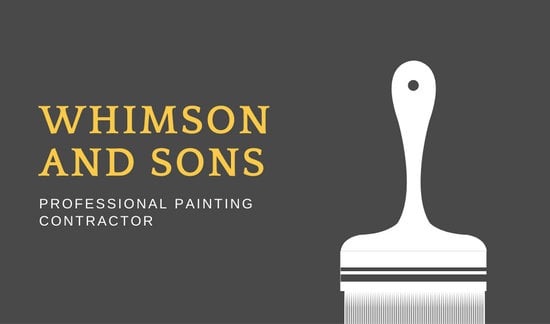Exactly How Weather Impacts Industrial Paint
Exactly How Weather Impacts Industrial Paint
Blog Article
Created By-Malling Sahl
When you're handling an industrial paint job, you can not neglect just how weather condition plays a critical duty in your success. Factors like temperature, humidity, and wind can either boost or undermine your initiatives, influencing every little thing from application high quality to safety on duty website. You might assume you can repaint anytime, however the fact is that certain problems can lead to costly delays or poor finishes. Recognizing these elements is key, but what particular strategies can you implement to ensure ideal results amidst unforeseeable climate?
Temperature Level and Paint Application
When it comes to commercial painting, temperature plays an important duty in exactly how well the paint adheres and dries. If you're intending a task, watch on the temperature level array recommended by the paint maker. Ideally, you intend to work within that variety for optimum outcomes.
When temperatures are as well low, paint can come to be thick and more difficult to apply, resulting in unequal protection. You might find yourself struggling with brush strokes or roller marks that just won't go away.
On the other hand, heats can create paint to completely dry as well promptly. This can result in issues like breaking or peeling off, as the paint doesn't have sufficient time to bond correctly to the surface.
If it's also warm, think about scheduling your work for cooler parts of the day, such as morning or late mid-day.
Moisture and Finish High Quality
Humidity considerably affects the finish quality of industrial painting tasks. When humidity levels are high, dampness airborne can hinder the drying out procedure of paint. This can bring about concerns like poor bond, irregular finishes, and raised drying out times.
You may discover that your paint takes longer to heal, which can delay your job timeline.
On the various other hand, low humidity can also posture troubles. If the air is also dry, paint can dry as well swiftly, stopping correct progressing and leading to a rough coating. You want your paint to stream smoothly, and quick drying can impede that, leaving you with an unacceptable surface.
To accomplish the very best finish, go for humidity degrees in between 40% and 70%. This variety allows for optimal drying out conditions, ensuring that the paint sticks well and levels out properly.
Consider using https://www.bhg.com/decorating/seasonal/fall/simple-fall-crafts/ or followers to control wetness in interior tasks, and attempt to plan exterior jobs for days when moisture is within the optimal range. By focusing on moisture, you can boost the final look and sturdiness of your business paint job.
Wind and Outdoor Conditions
While you mightn't think of wind as a significant factor, it can considerably affect the result of exterior industrial paint tasks. High winds can disrupt your application process, creating paint to completely dry too promptly. When relevant internet page dries out also quickly, it can result in an uneven coating or noticeable brush strokes.
You'll also deal with obstacles with paint overspray, as wind can lug fragments away from the designated surface, causing wasted products and prospective damage to surrounding locations.
Furthermore, strong gusts can create safety and security threats on duty website. https://www.hertsad.co.uk/lifestyle/property/5-tips-to-prep-surfaces-in-your-home-before-painting-5026340/ and scaffolding are extra at risk to tipping in windy conditions, putting your crew in jeopardy. It's important to monitor wind rates before beginning a task. If winds exceed secure restrictions, it's best to postpone your job to guarantee a top quality coating and maintain security.
On calmer days, you can make use of the perfect problems to accomplish smooth, professional results. Constantly check the weather prediction and strategy accordingly.
Verdict
Finally, understanding exactly how climate impacts industrial paint is critical for accomplishing the best outcomes. By monitoring temperature, humidity, and wind conditions, you can schedule your projects during optimum times. This not only makes certain a smooth application however also boosts the top quality of your surface. So, watch on the forecast and plan accordingly-- doing so will save you time, money, and stress while supplying a professional result whenever you paint.
